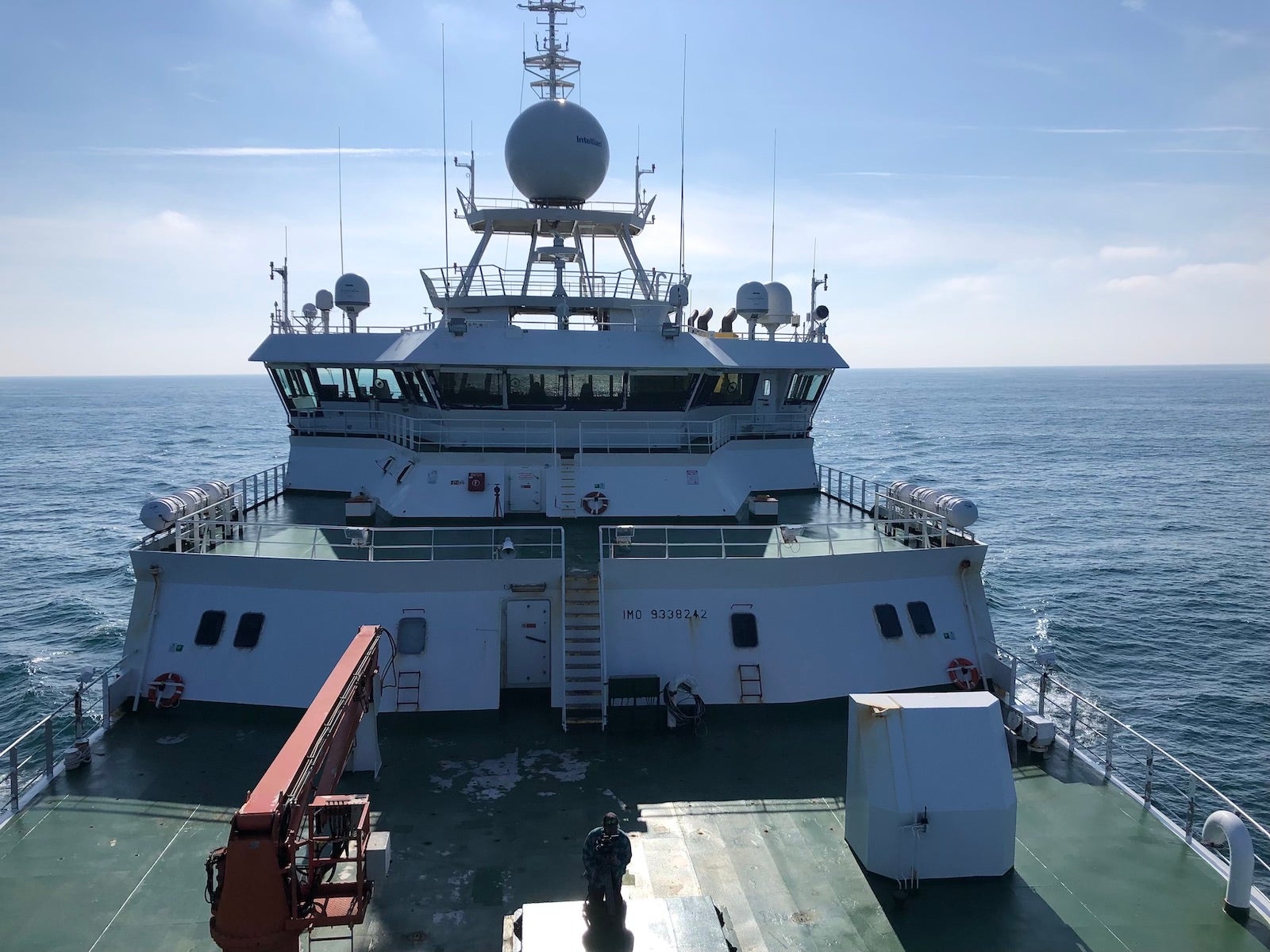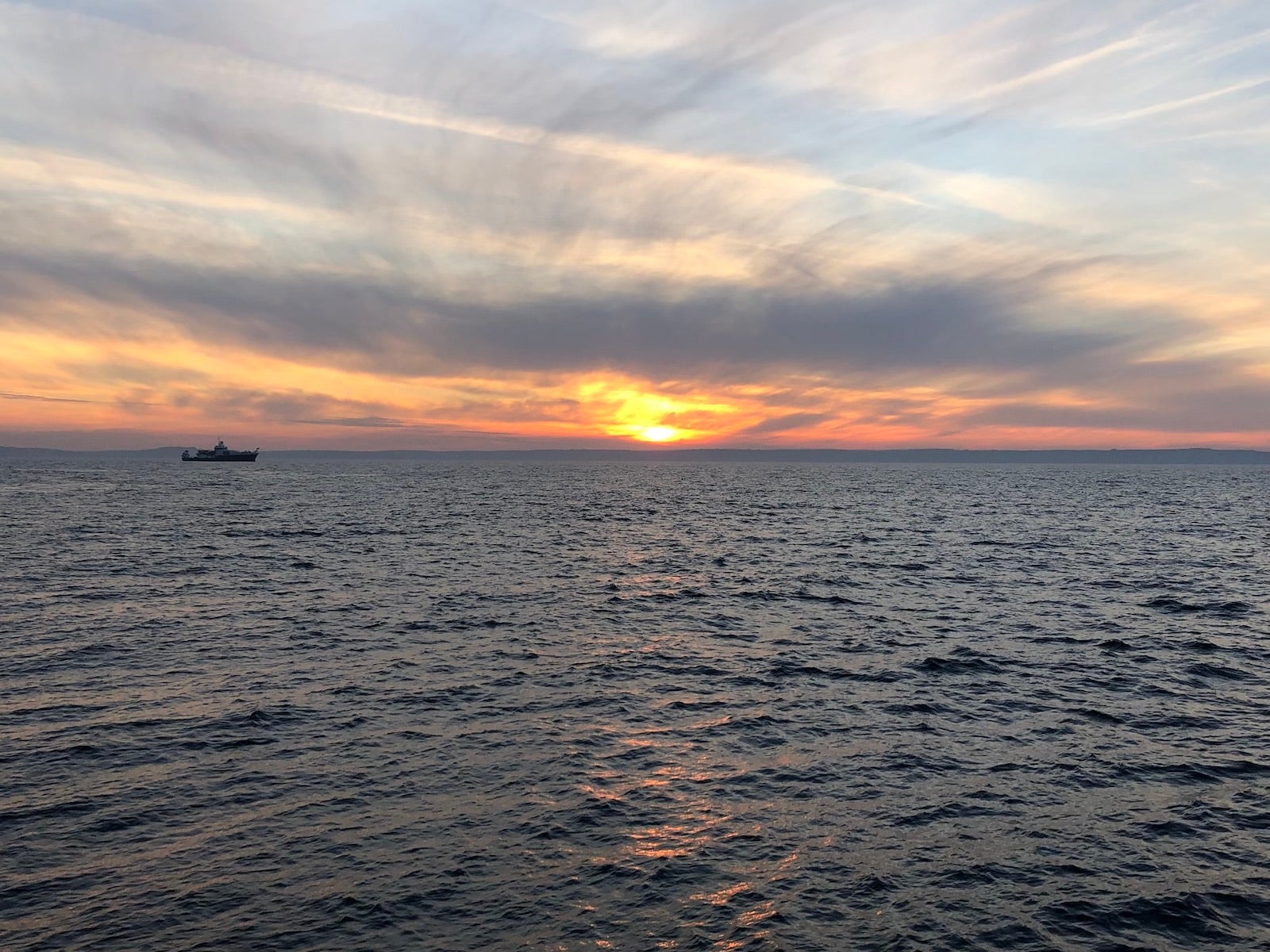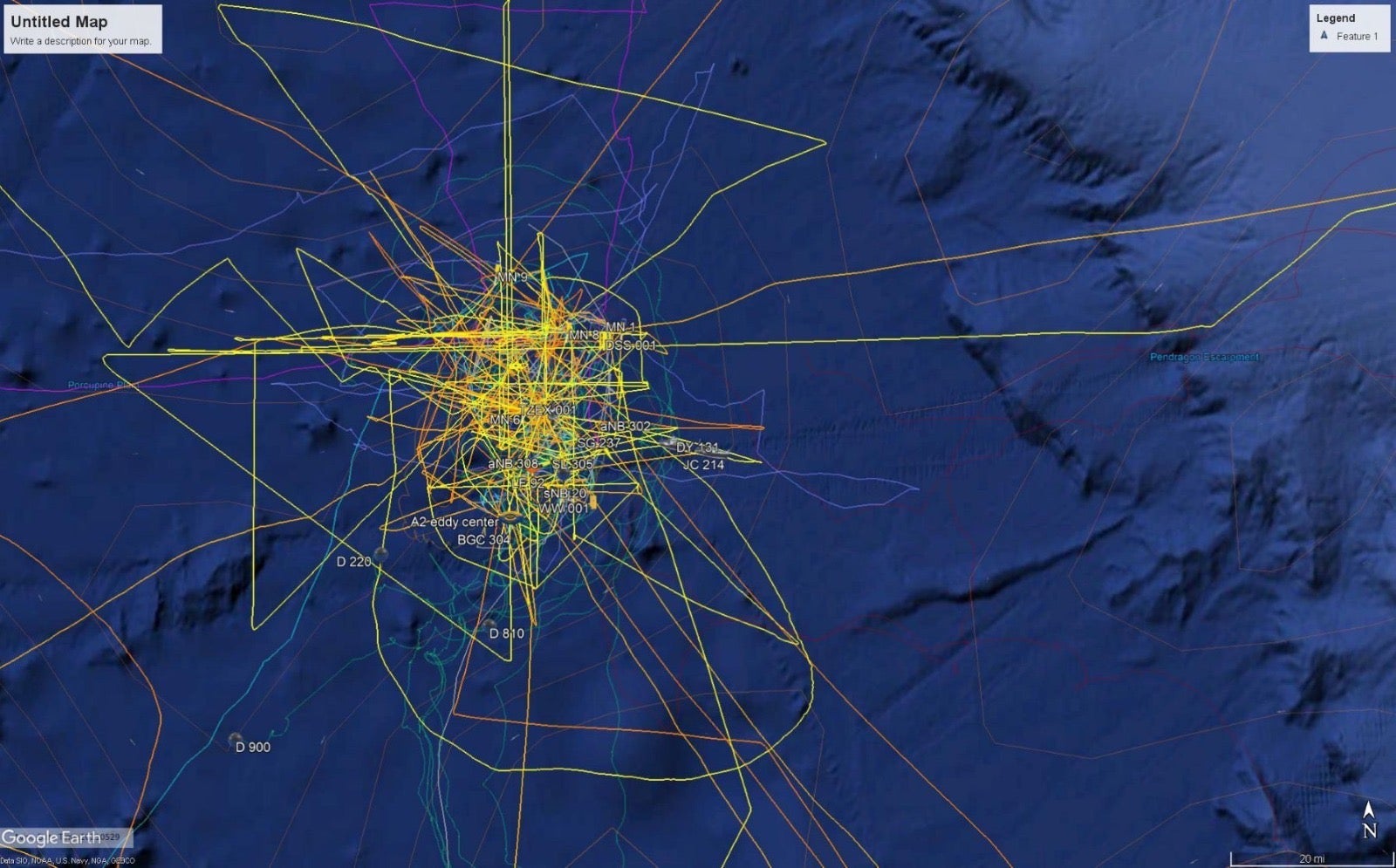This is the third and final piece in a series of posts by GSO Ph.D. candidate Diana Fontaine who just returned from the North Atlantic for the NASA EXPORTS project. You can find all of the posts here.
After our fifth storm of the trip on the Royal Research Ship James Cook, the weather spirits decided to give us a break. Rocking and rolling for multiple days, we were excited to be able to relax a little and have a break from the seemingly never-ending large waves and strong winds. Experiencing such drastic shifts in sea state first-hand gave me an appreciation for the strength of the ocean as I reflected on my time at sea.
Since my last blog post, we finished up our incubation experiments and completed even more filtering. In the end, we collected almost 2,000 filters for chlorophyll extraction! Despite all of the weather we experienced, we were still able to accomplish quite a lot of science. We also continued our collaborations and shared some of our preliminary results with the broader science group. After our last science meeting of the trip, it was time to pack up. Fortunately, the nice weather allowed for relatively easy packing as we disassembled our lab spaces.
Once we got back to port, we couldn’t leave the ship beyond the port gates at the risk of breaking the ship’s COVID-free bubble. Fortunately, to keep us busy, we had to take apart the labs that have been our science home for the last month. In addition, we had to get a COVID test for entry back into the United States. A team of medics boarded the ship for test administration and unsurprisingly we were all negative. While some people left the ship to go celebrate, my team decided to stay onboard which meant ship celebrations instead of pub celebrations. Although we were a bit sad that we couldn’t go celebrate in a pub, it was nice to hang out on the ship with some remaining scientists and the crew that we became close with over the past month.
Beyond the COVID test upon returning to port, logistics were a lot easier on the back end of the trip. We only had one test instead of five and no strict quarantine. Things around the Bay Campus changed quite a bit while we were gone, too. We left with strict mask mandates in place and were welcomed back to a social gathering without masks. This was exciting to return to after a six-week journey, and it was great to see everyone’s face again.
The next steps for the research project will involve sample processing and analysis back in the lab. Samples will be analyzed for community composition data (sequencing) and primary production rates. We will also have meetings with other scientists involved in the project to compare data and continue collaborations. This project is well over a decade in the making and there will be many presentations and publications stemming from this successful North Atlantic NASA EXPORTS campaign. It will be exciting to see what comes of all of our hard work over the next few years!
I hope you’ve enjoyed reading about my journey in the North Atlantic. Going to sea is hands-down the best part of my job and I encourage everyone to try it at some point in their life if possible. Feel free to reach out with any questions about the project or life at sea.




